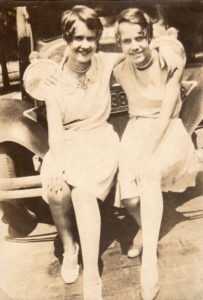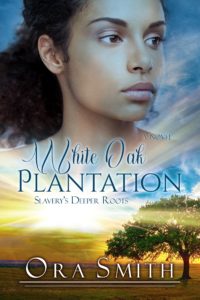My grandmother, Marie Hardison Whitehurst, was not a typical grandma who baked cookies and pattered about. She didn’t even want to be called grandma. To us, she was Mimi. She kept a slim figure, wore fashionable clothes, and was a socialite who had memberships at San Diego and later San Francisco boating clubs. She attended community gatherings and went to fancy restaurants with her tall, handsome husband. She told me she couldn’t bear to not live near water after she’d spent her younger years along the Atlantic seaboard. Proud of attending college in the 1930s, she often spoke of her alma mater, the College of William and Mary in Virginia.

Mimi bought herself a computer in the 1980s and was emailing before her grandchildren did, encouraging us to “get on” so she could send letters much faster and without stamps. She connected the extended family by telling us about each other. But mostly, she was a phenomenal storyteller, carrying the wisdom of generations.
I have many early memories of being nestled by her side, her arm around my shoulders while she talked on and on about those family members who went before me. I doubt many of her other eighteen grandchildren, or later fifty great-grandchildren, sat and listened for so long, but the colorful stories always kept me still. Through the years, the same stories were repeated, and I never tired of them. Perhaps they planted the seeds in me to become a writer.
Mimi helped me to see my ancestors as real people who lived full and important lives. When I visited at her home, she’d pull out heirlooms and tell me whatever stories she knew to go with them. She was a writer herself and left a legacy of poems, journals, and letters. I believe she kept every piece of family jewelry, furniture, household decor, photographs, and books she was ever given. In her later life, she gave the heirlooms as gifts to me and others who had an interest in family.
Her great-grandmother was Caroline, the woman my newest novel (to be released March 23!) is about. Mimi was ten when Caroline died, and Mimi too had sat at great-grandmother Caroline’s side listening to stories long past.
Mimi almost lived to her ninety-sixth birthday with her mind and memories intact. In the spring of 2009, she asked me to come visit, probably aware she was in her last weeks on earth. She wanted to go through heirlooms, mostly letters, and make sure I knew the stories. I wanted to do this too. It was a sad but special time to be alone with her.
She had me bring out the boxes under her bed that held love letters between her parents. The sweet words between them were genuine and heartwarming. There were also other letters in those boxes, sent between her siblings and cousins who lived across the American continent from one another. Even a letter from my great-great grandfather to his granddaughter Ora (my great-aunt) telling of the love of his life, our namesake, Ora Mattocks Hardison. My soon to be released novel, White Oak River, A Story of Slavery’s Secrets is the story of that first Ora’s parents. A love story too.

White Oak River: A Story of Slavery’s Secrets
After giving birth to a son with dominant African traits, a white Southern enslaver
must decide if she’ll hold onto her bigotry at the cost of her heart.
When Caroline Gibson marries the Reverend John Mattocks, she leaves behind her privileged life, which she finds easier than leaving behind her prejudices. While she’s content being served, John lives to serve others. Scorning his family’s wealth and long-held practice of owning slaves, he chooses to follow his conscience, becoming an abolitionist preacher. But after Caroline gives birth to a son of African heritage, they both must face their vastly different beliefs. Their marriage mirrors the Civil War’s failure to create a changed society, the turmoil not only leaving the nation in despair but their relationship as well. Can their love find deeper roots in forgiveness and acceptance?
This dramatic story of love, faith, family bonds, and discrimination is based on true events of the author’s great-great-great-grandparents in coastal North Carolina.

Prequel novella to White Oak River: A Story of Slavery’s Secrets
Will be offered on my website FREE for a limited time, starting March 23, 2021
White Oak Plantation: Slavery’s Deeper Roots
An enslaved young woman craves a family. Her mistress desires status in society.
Can an unlikely bond change their lives forever?
Most slaves long for freedom. Eighteen-year-old Spicey longs for a sister. As an orphaned house slave, she’s desperate to belong to a family—even her mistress Caroline’s family. But Caroline is more concerned with courting John, the local preacher, than noticing Spicey’s devotion or caring for her needs. Caroline doesn’t even think to look past Spicey’s skin color to see their relationship for what it is. But when the decision to protect a runaway slave causes them both to risk everything, will the chains of slavery keep them bound to a world of lies and prejudices or be the catalyst that sets them free?
